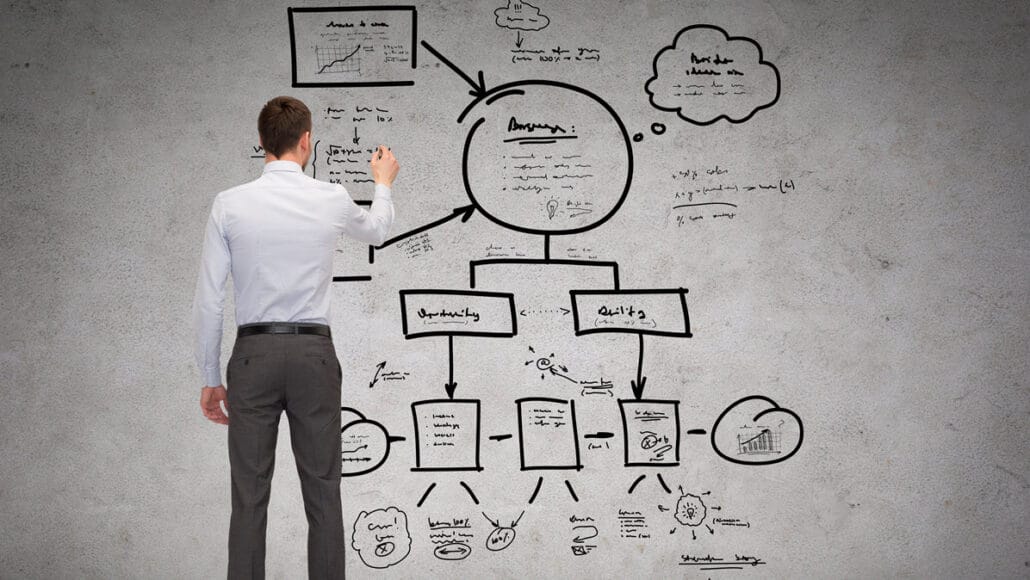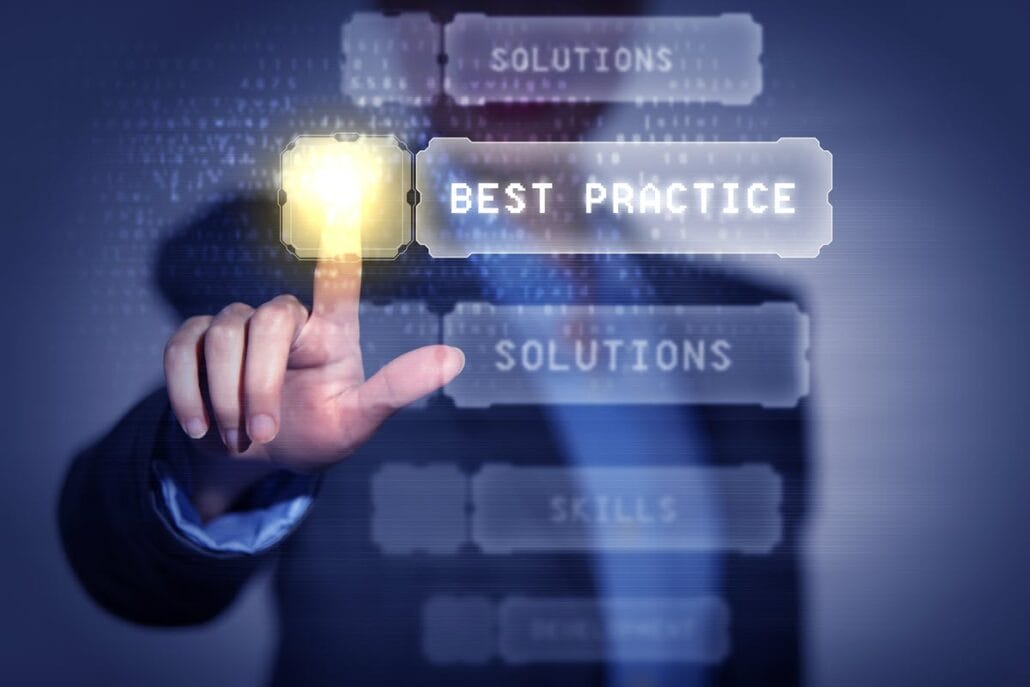Struggling with performance management problems like low productivity or high turnover? This article delves into common performance issues and offers practical strategies for HR professionals to resolve them. We’ll explore how to align goals, enhance feedback, and boost employee engagement for better results.
Key Takeaways
- Effective performance management requires addressing common challenges like misaligned goals, inadequate feedback, employee disengagement, and limited resources to improve overall organizational success.
- Implementing strategies such as setting clear expectations, enhancing feedback mechanisms, boosting employee engagement, and optimizing resource allocation can significantly enhance performance management outcomes.
- Adopting performance management software and securing leadership buy-in are essential for automating processes, providing real-time data, integrating HR functions, and fostering a supportive culture that values continuous feedback and development.
Identifying Common Performance Management Issues

Understanding and addressing common performance management issues is paramount for improving overall performance effectiveness. Challenges such as low productivity, high employee turnover, and inconsistent performance can significantly impact organizational success. These challenges occur for both on site workers and work from home employees. Consider both groups when developing your solutions.
Traditional performance management systems often fail to meet the needs of modern organizations, leading to dissatisfaction among managers and employees alike. Identifying these issues is the first step in creating a more effective performance management program.
Key performance indicators (KPIs) and other analytical tools can help pinpoint common performance problems. By recognizing issues such as:
- lack of feedback
- misaligned goals
- limited resources
- low employee engagement
organizations can take proactive steps to address these challenges and improve outcomes.
Let’s delve deeper into these performance issues and explore how to tackle them effectively.
Lack of Goal Alignment
Misaligned goals are a significant barrier to achieving organizational success. When employees are unclear about their goals or how their tasks align with company goals, they often experience:
- Lack of focus and direction
- Confusion
- Decreased productivity
- Poor performance outcomes
To avoid these issues, it is important to ensure that employees have a clear understanding of their goals and how they contribute to the overall success of the organization.
To improve employee performance, it’s essential to:
- Set clear goals
- Ensure that employees understand how their work contributes to the broader organizational objectives
- Build a culture around learning and growth
These steps can help keep employees aligned with company goals and motivated to achieve them.
Inadequate Feedback and Communication
Lack of feedback and poor communication are common performance management challenges that can hinder employee development and effectiveness. Employees need regular feedback to understand their progress and areas for improvement. Without timely feedback, employees may feel stressed and uncertain about their contributions, leading to decreased motivation and engagement.
Implementing continuous feedback mechanisms and fostering open communication can significantly enhance processes and improve employee performance.
Employee Engagement Issues
Low employee engagement is a widespread issue that can negatively impact performance management outcomes. Disengaged employees are less likely to be productive, motivated, or committed to their work, costing U.S. companies billions annually.
Factors such as insufficient recognition, poor work-life balance, and negative work environments contribute to disengagement.
To improve employee performance, it’s necessary to address these issues and foster a culture of trust, respect, and continuous feedback. Engaged employees are more likely to be motivated, productive, and committed to achieving organizational goals.
Limited Resources and Budget Constraints
Limited resources and budget constraints are significant hurdles in implementing effective performance management systems. Organizations often face challenges in terms of staffing, technology, and time constraints due to heavy workloads and competing priorities. These limitations can hinder the adoption of new performance management tools and processes, making it difficult to track and improve employee performance.
To overcome these performance management issues, it’s essential to optimize resource allocation and leverage technology to streamline processes and improve efficiency.
Strategies for Effective Performance Management

To build a high-performing workforce and overcome common performance issues, organizations need to adopt effective strategies. These strategies include:
- Setting clear expectations and goals
- Enhancing feedback mechanisms
- Boosting employee engagement
- Optimizing resource allocation
By addressing these key areas, organizations can create a performance management program that drives better performance and supports organizational success.
Let’s explore each of these strategies in detail to understand how they can help improve employee performance.
Setting Clear Expectations and Goals
Setting clear expectations and goals is fundamental to effective performance management. Using the SMART goal framework (Specific, Measurable, Achievable, Relevant, Time-bound) ensures that performance goals are well-defined and attainable.
Collaborative goal setting between managers and employees enhances engagement and effort, making it more likely that employees are invested in meeting their objectives.
Documenting and periodically reviewing goals helps keep all their team members aligned and focused on achieving organizational objectives.
Enhancing Feedback Mechanisms
Continuous feedback is indispensable for improving employee performance and engagement. By implementing agile feedback processes, such as:
- 360-degree assessments
- Peer feedback
- Manager feedback
- Self-assessment
HR leaders allow employees to receive feedback from multiple sources, providing a comprehensive view of their performance.
Regular check-ins and one-on-one meetings between employees and managers foster open communication and help address performance issues promptly. Effective feedback mechanisms not only facilitate communication but also enhance the performance management process.
Boosting Employee Engagement
Employee engagement is an essential factor in achieving performance effectiveness and organizational success. Recognizing employees for their contributions, offering flexible work arrangements, and providing professional development opportunities can significantly boost engagement.
Creating a culture of feedback and recognition through regular 1-on-1s and ongoing conversations helps keep employees motivated and committed to their work. Engaged employees are more likely to be productive, loyal, and aligned with company goals.
Optimizing Resource Allocation
Optimizing resource allocation is essential for supporting performance management efforts and improving efficiency. Leveraging technology, such as HR automation, can enhance the effectiveness of resource allocation by streamlining processes and providing clear next steps.
A streamlined performance management process makes it easier for HR leaders and managers to manage and track performance, leading to better outcomes in performance. Prioritizing clear and concise communication helps ensure that resources are used efficiently and effectively.
Leveraging Performance Management Software

Performance management tools and software offer a powerful solution to many performance management challenges. By automating processes, providing real-time data, and integrating with other HR functions, performance management software can significantly improve efficiency and accuracy.
Traditional performance management systems are frequently manual, which can make them time-consuming to operate. As a result, they may not be as effective as desired. Switching to a performance management platform can save time and money while providing a centralized platform for managing the entire performance management lifecycle.
Let’s explore how performance management software can enhance performance review processes, provide real-time data and analytics, and integrate with other HR processes to create a cohesive talent management strategy.
Automating Performance Reviews
Automating performance reviews can save time and improve the accuracy of performance management processes. A performance management program can:
- Set reminders for annual reviews
- Automate the scheduling of coaching sessions
- Provide alerts, follow-ups, and prompts to track and document progress
- Support data collection and analysis
- Track goal progress
- Manage recognition programs
- Initiate performance improvement plans
Automation makes it easier to manage and streamline performance management tasks.
By using simple, meaningful questions, performance management software can identify an employee’s strengths, pinpoint areas for improvement, provide feedback, and highlight career development opportunities.
Real-Time Data and Analytics
Access to real-time data and analytics is essential for informed decision-making in performance management. Performance management software provides dashboard-style reporting that allows managers and employees to track performance metrics and progress easily. Real-time data helps ensure alignment on progress towards goals, identify team needs, and gauge team sentiment.
By providing unbiased and accurate performance data, performance management software enables organizations to make informed decisions and improve overall performance.
Integrating with Other HR Processes
Integrating performance management with other HR processes is all-important for creating a cohesive talent management strategy. Performance management software can align existing systems for performance management with various HR functions, such as:
- feedback mechanisms
- goal setting and tracking
- employee development plans
- performance appraisals
- compensation and rewards
This ensures a comprehensive and unified approach to managing employee development and performance. Including processes like 360-degree reviews provides a holistic view of an employee’s performance and helps guide development.
Regular assessments keep performance and development at the forefront of everyone’s mind. Their consistency contributes to high performing employees a stronger workforce.
The Role of Leadership in Performance Management

Leadership plays a vital role in driving effective performance management. Leaders create a performance-oriented culture where high performance is valued and rewarded. They set the vision, create the strategy, and guide teams towards achieving organizational objectives. Effective leadership not only supports processes for performance management, but also motivates employees and fosters a productive workforce.
HR team members can address the challenge of lack of leadership support by sharing performance management success stories and providing concrete examples of the program’s results and feedback.
Let’s explore how to gain leadership buy-in, train and develop managers, and encourage a supportive culture to enhance performance management effectiveness.
Gaining Leadership Buy-In
Securing leadership buy-in is a high-priority for the successful implementation of performance management systems. Utilizing real-life success stories and case studies can effectively demonstrate the benefits of the new system to leaders.
Leadership support not only sends the right message to employees but also ensures that processes for improving performance management are given the priority and resources they need to succeed.
By involving leaders in the goal-setting and review process, organizations can create a culture where performance management is valued and supported.
HR professionals should encourage leaders to be on the same page when it comes to new processes; to offer frequent feedback, eliminate poor communication methods, support new performance review processes, and invest in technology.
Training and Developing Managers
Training and developing managers is essential for providing effective feedback and supporting employee development. Many managers lack formal training in giving quality feedback, leading to inconsistent practices and missed development opportunities.
The HR team should evaluate current performance management processes, select an approach, and provide coaching to managers with the necessary tools and training to succeed.
There are plenty of business development courses – both in-person and online – to help managers and supervisors fill in any skill gaps. By equipping managers with the skills to give constructive feedback and coach employees, organizations can improve employee performance and retention.
Encouraging a Supportive Culture

A supportive culture is vital for effective performance management. Leaders can foster a culture of trust and respect by:
- Creating an environment where employees feel valued and appreciated
- Having regular performance conversations
- Practicing transparent communication
- Using objective metrics to measure performance
These actions help build a positive workplace culture that motivates employees and encourages continuous improvement.
By fostering a supportive culture, organizations can enhance employee motivation, performance, and retention.
Overcoming Resistance to Change

Implementing new processes often results in resistance from employees. Addressing employee concerns and providing clear rationales for changes can significantly reduce resistance. Transparent communication about the benefits and impact of changes fosters trust and helps employees understand the importance of new processes.
Creating a clear and consistent message about the change, along with comprehensive training and support, encourages employees to adapt and embrace new performance management practices. Building a coalition of change champions within the organization can also help overcome resistance and promote acceptance.
Some strategies to reduce resistance and promote acceptance include:
- Addressing employee concerns and providing clear rationales for changes
- Transparent communication about the benefits and impact of changes
- Creating a clear and consistent message about the change
- Comprehensive training and support for employees
- Building a coalition of change champions within the organization
By implementing these strategies, organizations can increase the likelihood of successful adoption of new processes for performance management.
Let’s explore how to communicate the benefits, implement changes gradually, and provide continuous support to overcome resistance to change.
Communicating the Benefits
Clearly articulating the advantages of new performance management processes is essential to gaining employee buy-in and reducing resistance. By using concrete examples of benefits, such as:
- Improved productivity
- Personal and professional growth
- Clearer expectations and feedback
- Increased recognition and rewards
Employees can better understand how the changes will positively impact their work and career development.
Transparent and consistent communication about the benefits helps facilitate communication and build trust among employees, making them more open to embracing new performance management practices.
Gradual Implementation
Gradual implementation of new performance management processes allows employees to adjust to changes at a manageable pace, reducing resistance and fostering acceptance.
Implementing changes in phases or starting with small pilot programs can help test and refine new processes before full-scale implementation. This approach not only makes the transition smoother but also enables organizations to address any issues or concerns that arise during the initial stages.
A prominent example is Adobe, which successfully transitioned to a new performance management system by eliminating annual reviews and introducing quarterly check-ins.
Providing Continuous Support
Providing continuous support during the transition to new performance management processes is crucial for ensuring employee success and satisfaction. Regular check-ins, open lines of communication, and establishing a support system that includes coaching and mentoring can help employees navigate changes effectively.
By offering timely feedback and addressing issues promptly, organizations can create a supportive culture that encourages employees to embrace new performance management practices and improve their performance.
Best Practices for Consistent Performance Standards

Maintaining consistent performance standards is vital for ensuring fairness and clarity in performance evaluations. By defining and communicating standardized criteria, organizations can avoid confusion and unfair comparisons, leading to more accurate and objective assessments.
Regular calibration sessions help align evaluation criteria and address any discrepancies in performance assessments, ensuring that standards are applied consistently across the organization.
Using objective metrics, such as:
- quality
- quantity
- timeliness
- cost-effectiveness
further enhances the accuracy and fairness of performance evaluations.
Let’s explore how to define standardized criteria, conduct regular calibration sessions, and use objective metrics to maintain consistent performance standards.
Defining Standardized Criteria
Defining standardized performance criteria is important for setting clear and measurable expectations for employees. Standards should be objective, realistic, and clearly communicated to ensure that all employees understand what is expected of them.
Including multiple levels of performance standards, such as ‘Fully Successful’ and higher, helps employees know what it takes to exceed basic expectations and strive for excellence.
Clear and well-defined criteria enable fairer and more consistent performance evaluations, reducing the risk of bias and inaccuracies.
Regular Calibration Sessions
Regular calibration sessions are essential for ensuring that performance standards and evaluation criteria are applied consistently across the organization. These sessions involve discussions among managers to align their assessments, provide feedback, and address any discrepancies in performance evaluations.
By regularly calibrating performance standards, organizations can maintain fairness and objectivity in their performance management processes, leading to more accurate and reliable outcomes.
Using Objective Metrics
Using objective metrics is key to tracking performance accurately and reducing bias in employee evaluations. Metrics should be clearly defined and include specific measurements for:
- Quality
- Quantity
- Timeliness
- Cost-effectiveness
An automated performance review process can help reduce bias by using data to score completed goals and provide a more objective assessment of employee performance. By relying on objective metrics, organizations can ensure that performance evaluations are fair, accurate, and reflective of actual outcomes in performance.
Importance of Continuous Learning and Development

Continuous learning and development are crucial for enhancing employee performance and engagement. Implementing strategies such as mentorship, coaching, and skill development programs helps employees constantly update their skills and knowledge, leading to improved performance and productivity.
Regular opportunities for learning and development can significantly enhance job satisfaction for top-performing employees and contribute to improved talent acquisition and retention.
By fostering a culture of continuous learning, organizations can motivate employees to grow and excel in their roles. Let’s explore how to implement training programs, promote professional development, and foster a learning culture to support continuous learning and development.
Implementing Training Programs
Implementing ongoing training programs is essential for helping employees adapt to new performance management systems and enhance their skills. Blended learning, which combines formal and informal learning methods, creates a comprehensive training approach that caters to different learning styles.
Formal training programs, such as classes, workshops, and certification courses, are designed to teach specific skills or knowledge, providing employees with the tools they need to succeed. By offering regular training sessions and resources, organizations can support employee development and improve performance outcomes.
Promoting Professional Development
Promoting professional development is essential for retaining top talent and increasing job satisfaction. Providing regular opportunities for learning and development can make employees more marketable and prepared for higher roles, contributing to career advancement.
Research indicates that nearly all employees, 94% to be exact, express a desire to remain in their current position if their company provides access to learning and professional growth. This suggests that offering such opportunities could be an effective way to retain talent.
By prioritizing personal and professional development, organizations can improve employee retention, motivation, and performance.
Fostering a Learning Culture
Fostering a learning culture encourages employees to share knowledge and engage in ongoing personal and professional growth. Leaders can enhance performance management by creating an environment that supports continuous learning and development.
Integrating training programs into daily tasks and offering diverse and personalized learning opportunities can cater to different learning styles and preferences.
Recognizing and rewarding continuous learning efforts reinforces the importance of ongoing development and motivates employees to take ownership of their growth. By fostering a supportive culture of learning, organizations can improve employee performance and retention.
Summary
In conclusion, addressing common performance management problems and implementing effective strategies can significantly enhance employee performance and organizational success.
By setting clear expectations, providing continuous feedback, boosting employee engagement, optimizing resource allocation, leveraging performance management software, and fostering a supportive culture, organizations can overcome performance management challenges and achieve better performance outcomes.
Prioritizing continuous learning and development further supports employee growth and retention, leading to a high-performing workforce.
Embrace these best practices to transform your performance management processes and drive organizational success.
Frequently Asked Questions
What is the most difficult part of the performance management process?
The most difficult part of the performance management process is often evaluating or managing an employee’s performance without a detailed job description, which can make it hard for both managers and employees. It’s essential for employees to know their performance expectations to facilitate effective management.
What are the most common performance management problems?
The most common performance issues are low productivity, high turnover, misaligned goals, inadequate feedback, limited resources, and low employee engagement. Addressing these issues can greatly improve organizational performance.
How can organizations set clear expectations and goals for employees?
Organizations can set clear expectations and goals by utilizing the SMART framework and involving employees in collaborative goal setting to ensure alignment and motivation.
Why is continuous feedback important in performance management?
Continuous feedback is essential in performance management as it helps employees track their progress, receive recognition for their achievements, and boosts motivation and productivity.
How can performance management software improve performance reviews?
By automating scheduling, providing real-time data, integrating with other HR processes, and offering tools for 360-degree feedback, performance management software can significantly improve the accuracy and efficiency of performance reviews.


